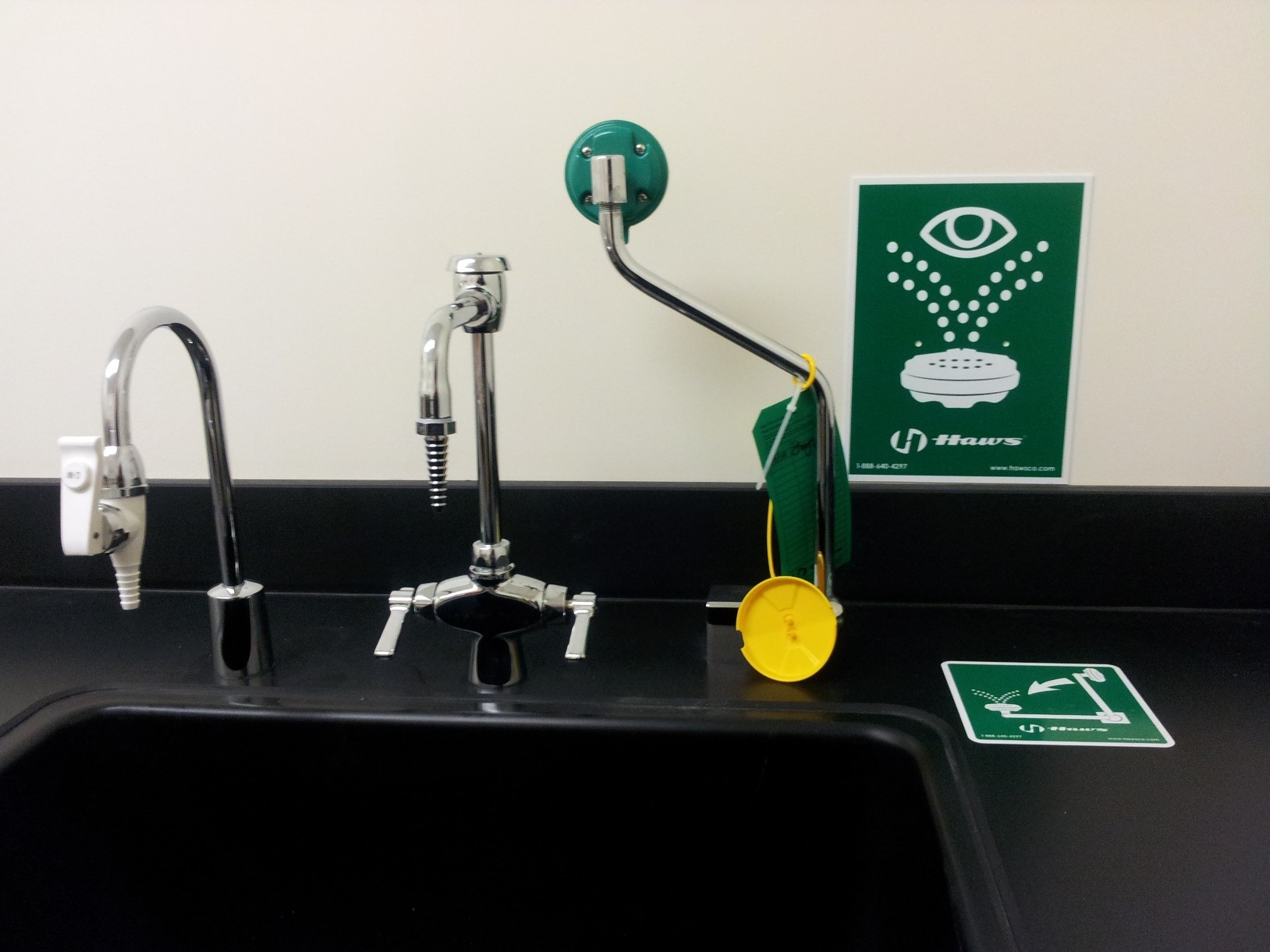Emergency Washing Equipment

Emergency washing equipment is provided in University facilities for the purpose of removing hazardous materials from the eyes and skin in the case of an exposure. Examples of emergency washing equipment are listed below.
Polychlorinated biphenyls (PCBs)
Polychlorinated biphenyls (PCBs) are toxic, persistent manmade chemicals that were widely used as an oil additive in electrical equipment and as a plasticizer in building materials. Congress banned the manufacture and use of PCBs in 1978.
Safety Data Sheet Template
Use a Safety Data Sheet Template if synthesizing a hazardous chemical.
The PI or manager must generate a Globally Harmonized System (GHS) compliant label and safety data sheet (SDS) before shipping or transporting the chemical away from the campus.
Specific Chemical Hazards
Download secondary chemical container labels
Many laboratories use hazardous chemicals that are purchased in large quantities and then transferred into smaller secondary containers (e.g., vials, flasks or bottles), or prepared as diluted solutions or mixtures for use.
If your laboratory uses secondary containers filled with chemicals, the secondary containers must comply with OSHA’s Hazard Communication Standard for Labels and Pictograms.
Secondary Chemical Label 3
Secondary chemical container labels allow the user to identify chemical composition and mixtures while indicating hazards.
Secondary Chemical Label 2
Secondary chemical container labels allow the user to identify chemical composition and mixtures while indicating hazards.
Secondary Chemical Label 1
Secondary chemical container labels allow the user to identify chemical composition and mixtures while indicating hazards.
Teaching Lab Safety Checklist
The Teaching Lab Safety Checklist addresses safety compliance requirements for teaching lab spaces.
Professors and principal investigators are responsible for ensuring the items on the checklist are completed.